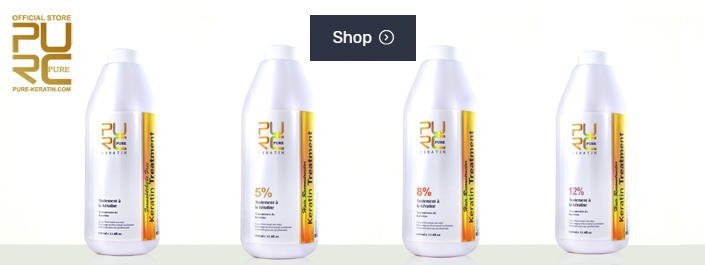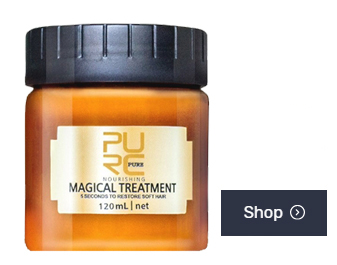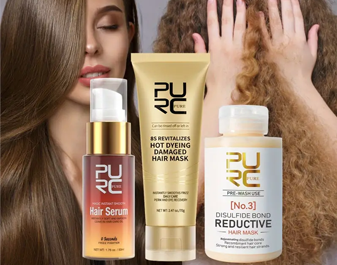Keratin treatment for thinning hair
PURE KERATIN on 25th Jun 2024
Keratin Treatment for Thinning Hair
Outline
- Introduction
- Understanding Hair Thinning
- What is Keratin?
- Keratin Treatment Overview
- How Keratin Treatment Works
- Benefits of Keratin Treatment for Thinning Hair
- Potential Risks and Side Effects
- Keratin Treatment vs. Other Hair Treatments
- Choosing the Right Keratin Treatment
- DIY Keratin Treatments
- Maintaining Results After Keratin Treatment
- Keratin Treatment for Different Hair Types
- Real-Life Experiences
- Cost of Keratin Treatment
- Conclusion
- FAQs
Introduction
Thinning hair can be a real confidence shaker. Whether it's due to genetics, stress, or lifestyle choices, watching your once luscious locks lose volume is tough. But what if I told you there's a way to breathe life back into your hair? Enter: keratin treatment. This miracle solution has been making waves in the hair care world, promising to transform even the thinnest strands into a fuller, shinier mane. Let's dive into the world of keratin treatments and see how they can help with thinning hair.
Understanding Hair Thinning
Causes of Hair Thinning
Hair thinning happens for a myriad of reasons. Here are a few:
- Genetics: If thinning hair runs in your family, there's a chance you'll experience it too.
- Hormonal Changes: Pregnancy, menopause, or thyroid problems can lead to hair loss.
- Nutritional Deficiencies: Lack of essential nutrients like iron and vitamins can weaken hair.
- Stress and Lifestyle: High stress levels and poor lifestyle choices can contribute to hair loss.
Common Misconceptions About Hair Thinning
Many people believe that using too many hair products or washing hair too frequently causes thinning. While harsh treatments can damage hair, they aren't the root cause of thinning. It's more about what's happening inside your body than what you're putting on your head.
What is Keratin?
Definition of Keratin
Keratin is a type of protein that makes up your hair, skin, and nails. It acts as a protective shield against damage and stress.
Role of Keratin in Hair Health
Keratin strengthens and smooths the hair, making it look shiny and healthy. It's like a protective layer for your strands.
Natural vs. Synthetic Keratin
Natural keratin is found in your body, while synthetic keratin is used in hair treatments to replenish lost keratin and repair damage.
Keratin Treatment Overview
What is Keratin Treatment?
Keratin treatment is a hair smoothing process that involves applying a keratin-infused product to your hair and sealing it with heat. This treatment aims to reduce frizz, add shine, and strengthen hair.
Different Types of Keratin Treatments
There are various types of keratin treatments, including Brazilian keratin treatment, soft keratin treatment, and express keratin treatment, each catering to different hair needs and textures.
How Keratin Treatment Works
The Science Behind Keratin Treatment
Keratin treatment works by infusing keratin into the hair shaft, filling in gaps in the hair cuticle, and creating a smooth, protective layer around each strand.
Step-by-Step Process of Keratin Treatment
- Cleaning: Your hair is washed to remove any buildup and open the cuticles.Application: The keratin solution is applied to your hair and left to sit for about 20-30 minutes.
- Sealing: A flat iron is used to seal the keratin into the hair.
- Rinsing: Your hair is rinsed and styled as desired.
Duration and Frequency of Treatment
The effects of keratin treatment typically last three to five months, depending on your hair type and maintenance routine. It's recommended to get the treatment every three to five months to maintain results without risking hair damage.
Benefits of Keratin Treatment for Thinning Hair
Strengthening Hair Strands
Keratin treatment strengthens hair strands by replenishing lost keratin, making them more resilient to damage.
Reducing Hair Breakage
By filling in gaps in the hair cuticle, keratin treatment reduces hair breakage and split ends.
Enhancing Hair Volume and Thickness
The treatment can give the appearance of thicker, fuller hair by smoothing the hair cuticle and reducing frizz.
Improving Hair Manageability
Keratin treatment makes hair easier to manage, reducing the need for daily styling and heat exposure.
Potential Risks and Side Effects
Possible Allergic Reactions
Some people may experience allergic reactions to the chemicals used in keratin treatments. It's essential to do a patch test before proceeding with the full treatment.
Formaldehyde Concerns
Many keratin treatments contain formaldehyde, a chemical linked to health issues. Opt for formaldehyde-free treatments if you're concerned about this risk.
Hair Damage with Overuse
Overusing keratin treatments can lead to hair damage and breakage. It's important to follow recommended guidelines and avoid excessive treatments.
Keratin Treatment vs. Other Hair Treatments
Comparison with Other Hair Treatments
Compared to other treatments like hair transplants or daily hair loss medications, keratin treatments are less invasive and offer immediate results.
Pros and Cons of Keratin Treatment
- Pros: Immediate results, smoother hair, reduced frizz, and stronger strands.
- Cons: Can be expensive, potential allergic reactions, and formaldehyde concerns.
Choosing the Right Keratin Treatment
Factors to Consider
Consider your hair type, budget, and any allergies when choosing a keratin treatment. Consulting with a professional stylist can help you make the best decision.
Consulting with a Professional Stylist
A professional stylist can assess your hair and recommend the most suitable keratin treatment for your needs, ensuring optimal results and minimal risks.
DIY Keratin Treatments
At-Home Keratin Treatment Kits
At-home keratin treatment kits offer a convenient and cost-effective alternative to salon treatments. However, they may not provide the same level of results as professional treatments.
Pros and Cons of DIY Treatments
- Pros: Cost-effective, convenient, and easy to use.
- Cons: May not be as effective, risk of improper application, and potential for damage if not used correctly.
Safety Tips for At-Home Treatments
Always follow the instructions carefully, do a patch test before applying the product to your entire head, and avoid overusing the treatment to prevent damage.
Maintaining Results After Keratin Treatment
Post-Treatment Hair Care Routine
Maintain the results of your keratin treatment by using sulfate-free shampoos and conditioners, avoiding excessive heat styling, and protecting your hair from chlorine and saltwater.
Recommended Hair Products
Look for hair products specifically designed for keratin-treated hair to maintain smoothness and shine. These products help prolong the treatment's effects and keep your hair healthy.
Avoiding Harmful Practices
To keep your hair looking its best, avoid harsh chemicals, excessive heat styling, and frequent washing, which can strip the keratin from your hair.
Keratin Treatment for Different Hair Types
Fine Hair
Keratin treatment can add volume and thickness to fine hair, making it appear fuller and more robust.
Curly Hair
Curly hair benefits from keratin treatment by becoming more manageable, with reduced frizz and enhanced curl definition.
Color-Treated Hair
Color-treated hair can undergo keratin treatment, but it's essential to use a color-safe formula to prevent fading and damage.
Real-Life Experiences
Testimonials from Individuals with Thinning Hair
Many individuals with thinning hair have experienced positive results from keratin treatments, reporting thicker, healthier-looking hair and improved confidence.
Case Studies and Before-and-After Photos
Before-and-after photos showcase the transformative effects of keratin treatments, highlighting increased volume, reduced frizz, and enhanced shine.
Cost of Keratin Treatment
Average Cost of Professional Treatments
Professional keratin treatments typically range from $150 to $300, depending on the salon and treatment type.
Cost Comparison with Other Treatments
While keratin treatments can be pricey, they often cost less than hair transplants or long-term medication use.
Conclusion
Keratin treatments offer a promising solution for those struggling with thinning hair. By strengthening strands, reducing breakage, and adding volume, they can transform your hair's appearance and boost your confidence. However, it's essential to weigh the benefits against potential risks and consult with a professional before deciding on the treatment.
FAQs
Is keratin treatment safe for thinning hair? Yes, keratin treatment is generally safe for thinning hair, but it's crucial to choose a reputable salon and discuss your hair condition with a stylist.
How long do the effects of keratin treatment last? The effects typically last three to five months, depending on your hair type and maintenance routine.
Can I do keratin treatment at home? Yes, at-home keratin treatment kits are available, but professional treatments often yield better results.
Are there any side effects of keratin treatment? Possible side effects include allergic reactions and exposure to formaldehyde. Opt for formaldehyde-free treatments if concerned.
How do I maintain the results of keratin treatment? Use sulfate-free shampoos and conditioners, avoid excessive heat styling, and protect your hair from chlorine and saltwater to maintain results.



















